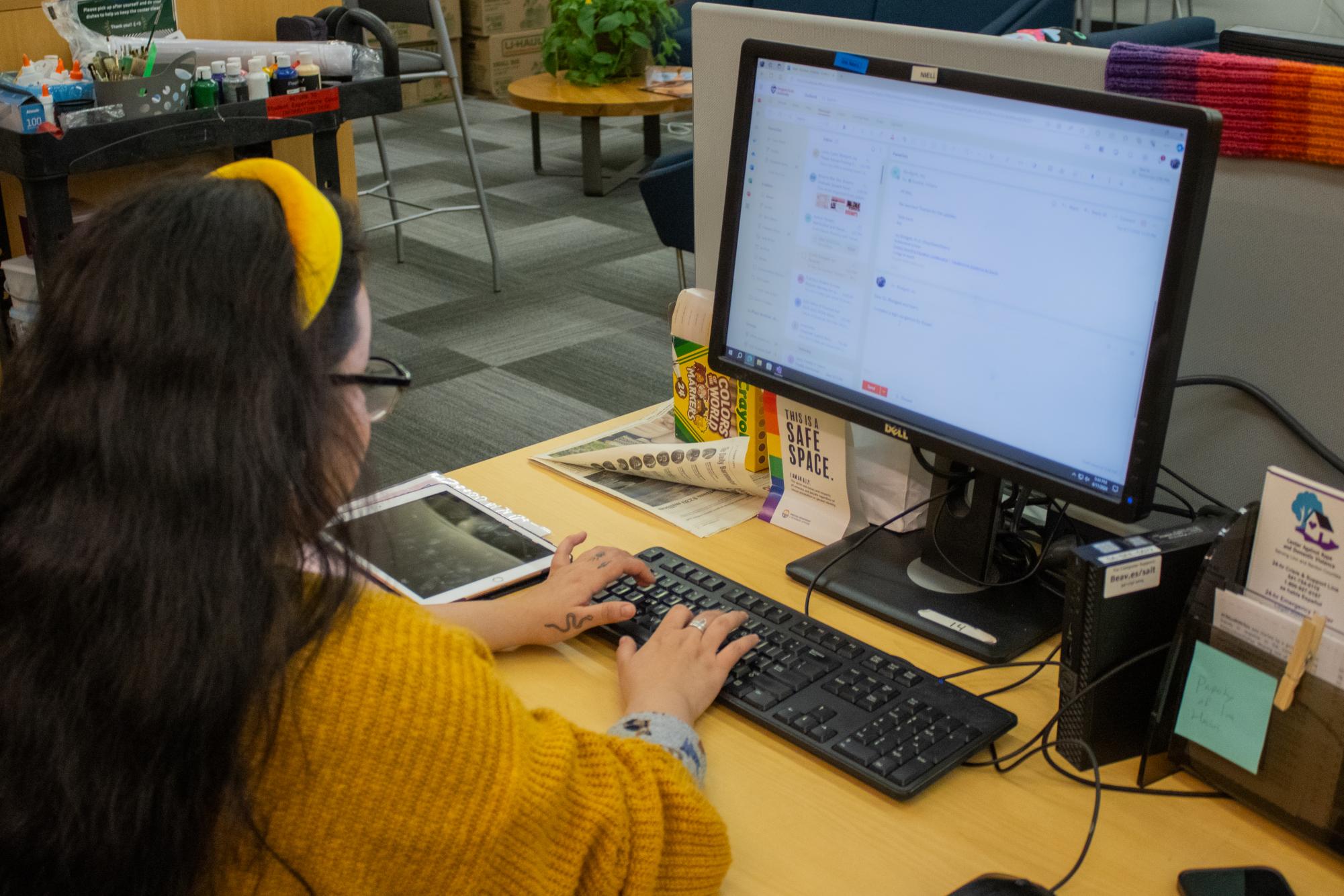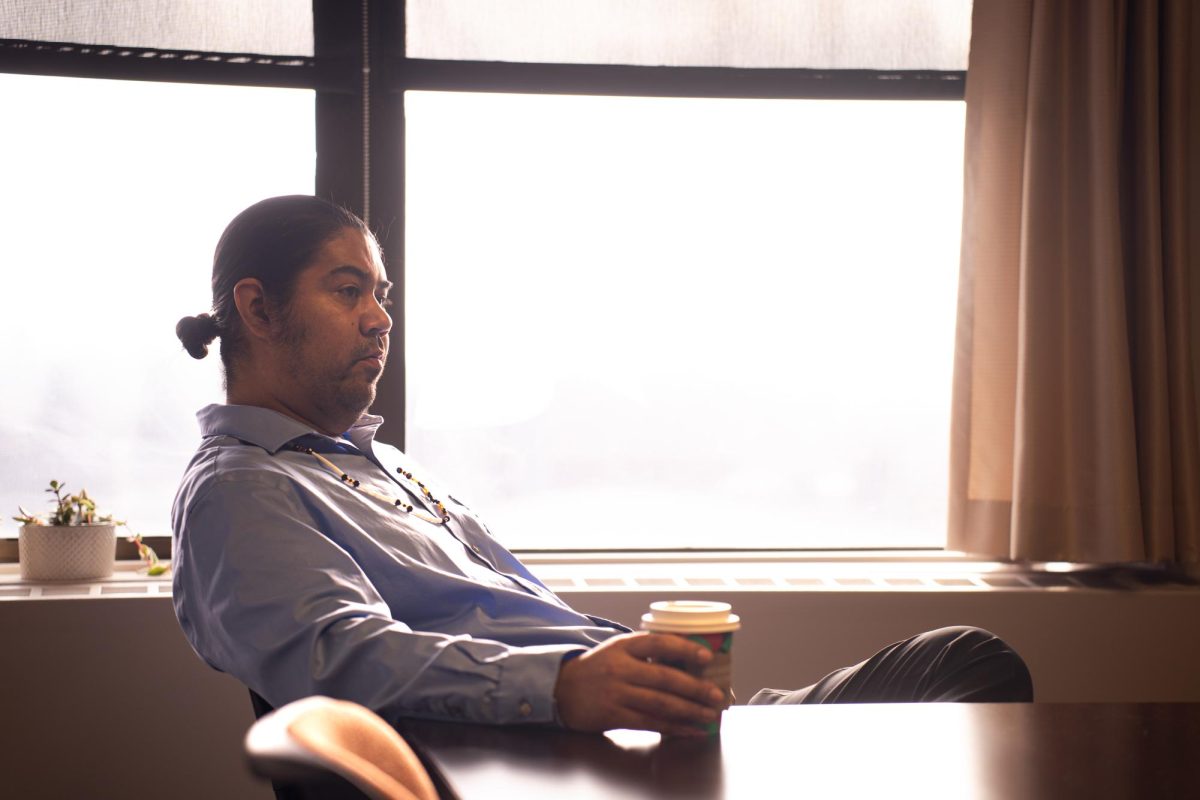Spring term has commenced here at Oregon State University. With the change in season, the campus is shifting into sunshine, blossoming flowers and warmer days.
Just kidding.
With persistent April showers continuing into May, students kept indoors by the weather have a chance to reflect on the challenges they face in balancing academic responsibilities with their mental well-being.
OSU students find themselves at the intersection of academic rigor and mental well-being. Students with intersecting identities such as non-traditional, first-generation, low-income and minority status grapple with nuanced challenges. Imposter syndrome and fear of failure loom in the background, intensifying mental health issues and hindering academic success.
When academic demands start to become overwhelming, students said they experienced mental health struggles like anxiety, depression and burnout. Students may not have the answer to this growing mental health crisis, but they do have a means to cope and a solution: fostering a community.
The National Institute of Health released a report that examined the prevalence and significance of mental health problems among college students and the concerning nature of its implication on student’s futures. In the report’s findings, students were separated into traditional and non-traditional.
Traditional students were described as young, inexperienced and financially reliant on their parents. They likely started college after completing high school and have less exposure to living in an environment with people who may have a different culture or beliefs than theirs.
Non-traditional students were described as older, likely to have dependents or a spouse and employed full-time. Though not all non-traditional students held full-time employment status, all had prior job experience before college.
Looking at the differences between the students, the findings show that both groups are still exposed to common stressors like balancing work, family demands and academic requirements.
The report also ranked the most prevalent mental health disorders among the students as anxiety, depression, attention deficit hyperactivity disorder and autism spectrum disorders.
Fifty-one percent of OSU students are considered non-traditional, according to data from College Factual.
Considering the diversity of OSU student age demographics and the unique pressures that arise from daily life, students examine how their identities play a role in their mental health.
Niki Hao Ling is a first-generation international student in the first year of her master’s of business administration at OSU. Hao Ling is from Taiwan and decided she needed to pursue a graduate degree so she could diversify her skills and become adaptable to the job market.
Hao Ling has a professional background in finance. However, she noted that fintech is having a “boom” right now, so she decided she wanted to be proactive and advance her education and skill set.
With the growth of AI and its inevitability of becoming more ingrained in the job market, as she puts it, she’d rather embrace change, grow with it and learn how to incorporate those skills.
“That’s why I’m here to learn skills, like coding or enhancing my English. That’s the reason why I came here to study,” Hao Ling said. “AI is the future, right? We are not sure what AI will become. If it will be used in the right way … It’s a mystery. We’re afraid and I want to not be replaced.”
Victoria Escobar is also a first-generation student in the first year of her master’s of public health program at OSU. For her, the pressures of advancing her education come from wanting to give back.
Escobar is no stranger to backlash and violence, and the stressors that can arise from threats can have debilitating effects on one’s mental health, as Escobar described. However, she is determined to keep working towards her goals.
“I’ve done a lot of LGBTQ+ activism since I was in high school,” Escobar said. “I even received death threats for it. It’s something that I’ve been passionate about and I cannot give up.”
Hao Ling also spoke about how she experienced discrimination while living in the United States, which was a new experience for her. Though she won’t make assumptions as to why she may have been treated differently, Hao Ling said she knows that channeling her energy into her degree will be worth the stress.
For students like Hao Ling and Escobar who find themselves in these positions of being non-traditional students with life experience outside of college before entering it, the nexus for how their mental health affects them and their academics looks different.
Escobar copes with her imposter syndrome, anxiety and fear of failure by going to the campus cultural centers like the Pride Center. She looks to her community to cope when in a bad head space.
“The Pride Center has been a safe space for me,” Escobar said. “It’s a place I like to spend a lot of my time in. I feel welcomed and comfortable and it’s a relief from campus sometimes.”
Hao Ling takes a different approach. She likes to get moving, and whenever possible she’ll find a spot to do so.
“I express my energy and exercise; I like to dance,” Hao Ling said. “When I dance, I focus on my body. I don’t think about other pressures. So, that will make me feel relieved at that moment.”
OSU has resources that have made the transition for students like Hao Ling easier to navigate their classroom environment. Hao Ling will often go to the writing center on campus for help with class assignments and has used the INTO OSU program for international student’s academic success and English language learning lessons.
Escobar said that as a graduate student, she is “glued to her computer.” College students today are juggling a dizzying array of challenges, from coursework to relationships, economic strain, social injustice, mass violence and various forms of loss. It can’t be shut off.
Students – everyone is connected now more than ever from witnessing something on social media as innocuous as an innocent prank in one video to the piled-up bodies of this week’s tragedy in another. All in the fell swoop of a thumb swipe.
It takes a toll.
Students have voiced in the past that the services on campus are understaffed and overworked. The academic pressure and rigor being asked are mounting.
The prolonged exposure to being online for school work leaves students vulnerable and Escobar speaks about how OSU could do more for student’s mental health.
Another way to help, Hao Ling suggested, is fostering a community for international students, which would be one way of removing barriers and helping to make introductions feel less intimidating and awkward.
“OSU can help us to connect with other cultures (and) be more diverse to absorb other cultural things. I think it will help international students not just be in their group,” Hao Ling said.
Hao Ling suggested OSU could host an event that would allow the incoming international students to meet and build bridges of communication. Getting to know one another and asking questions about where they are from would help make connections quicker and build solidarity with others.
“I wish people were here for a deeper connection,” Escobar said. “Sometimes people just have a 10 minute conversation and share LinkedIn profiles, that’s an issue I’ve seen on campus.”
Escobar wishes for deeper connections; OSU sits in what she calls a transient town. Students come here just to get their education and leave so there isn’t a lot of focus on fostering lifelong connections.
“OSU could be better about balancing mental health and academia by making space for community,” Escobar said. “I feel like they lack warmth here, just straight up. I wish for a deeper connection.”












































































































